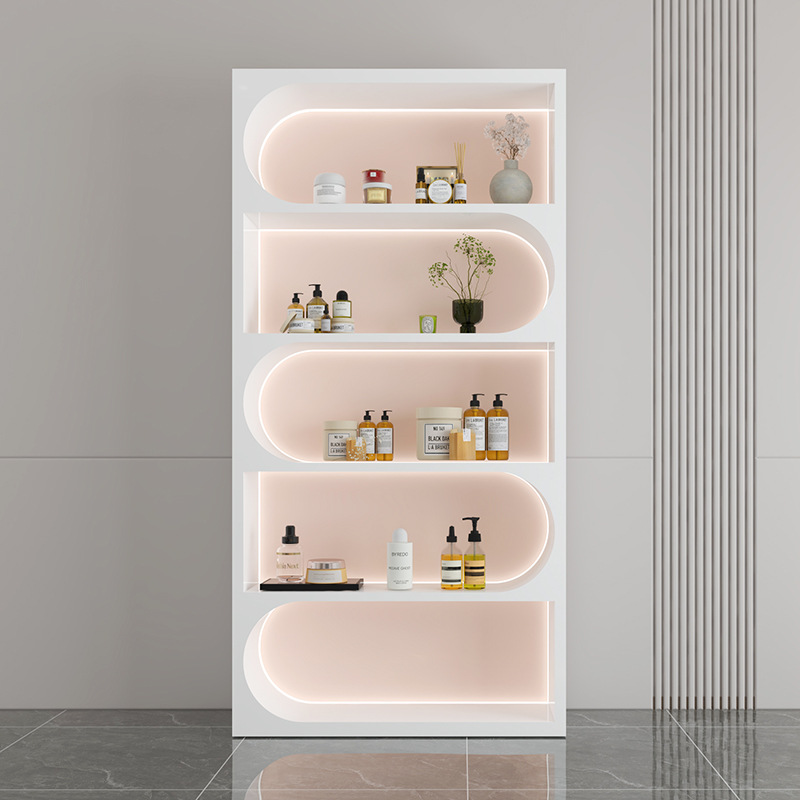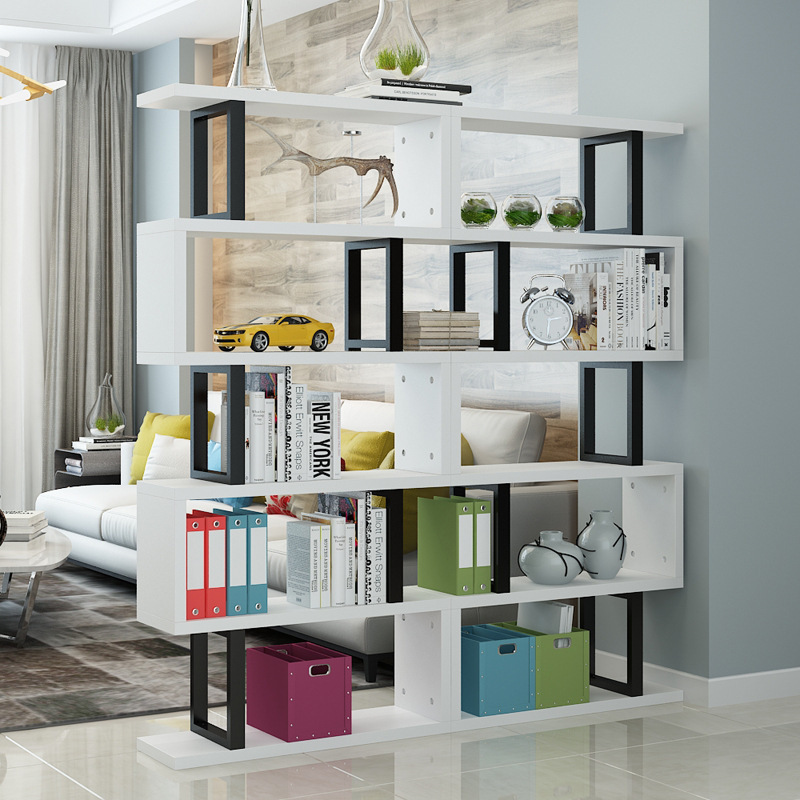The future trend of commercial display furniture
The future trend of commercial display furniture will deeply integrate brand experience, technological interaction,
sustainability and space efficiency, gradually shifting from static displays to dynamic and intelligent "experience
media".
1. Core Trends Drive Future Design
1. Immersive Experience Enhancement
- AR/VR Integrated Display: Furniture with built-in screens or transparent projection surfaces (such as smart glass
display cases), where users can scan to view 3D product demonstrations or virtual try-ons (such as the "magic
mirror fitting room" in clothing stores combined with display stands).
- Sensory Interaction: Touch-enabled desktops automatically retrieve product information, scent release devices
(such as fragrance display stands that switch scents based on the product).
2. Modularization and Flexible Reconfiguration
- Quick-Disassembly Display Systems: Adapt to pop-up stores or seasonal theme changes, such as magnetic
display boards, retractable track shelves.
- Multi-functional Combinations: Integrated design of display stands + storage + checkout counter (such as the
dessert display cabinet in a café serving as a self-ordering screen).
3. Data-Driven Intelligent Display
- User Behavior Analysis: Built-in sensors to track foot traffic hotspots and dwell times, automatically optimizing
display layouts (such as intelligent shelves dynamically adjusting product positions).
- Personalized Recommendations: After recognizing the customer's identity through facial recognition, the display
lights/content switch to match preferences (such as the "exclusive display mode" in luxury stores).
4. Sustainable and Low-Carbon Design
- Recyclable Materials: Recycled aluminum display stands, paper-based modular display stands (such as the
paper display stands launched by IKEA).
- Zero-Waste Rental Model: Brands rent reusable and modifiable display systems to reduce waste from one-time
setups.
II. Detailed Innovation Directions for Scenarios
1. Retail Spaces
- Unmanned Retail Integration: Intelligent shelves automatically identify and retrieve items, and perform
simultaneous settlement (such as the display cabinets of Amazon Go style).
- Socialized Display: Exhibition booth designs encourage users to take photos and make check-ins (such as
mirror-reflection art installations + product displays).
2. Exhibitions and Showrooms
- Portable exhibition equipment: inflatable exhibition stands, foldable illuminated signs, reducing logistics costs.
- Holographic projection as an alternative to physical items: using virtual exhibits to reduce transportation (such
as 3D suspended car models in auto exhibitions).
3. Office and Business Hall
- Brand Culture Display Wall: An interactive screen is embedded in the corporate culture timeline, allowing visitors
to scroll and view the information.
- Digital Tour Desk: Through gesture control, visitors can query enterprise information or navigate the space.
III. Key Points of Technology Empowerment
- Internet of Things (IoT): Automatically notify replenishment when the inventory of the display cabinet is insufficient.
- Flexible display technology: Replace traditional signs with curved screens or electronic ink labels.
Future Outlook
Commercial display furniture will gradually assume the triple roles of "silent salesperson", "data entry point", and
"brand experience carrier". For example:
- Nike's concept store has attempted to allow users to scan shoes on the AR stand to view the stories of the star
players;
- MUJI's eco-friendly display stands use recycled wood and standardized components while conveying the brand's
philosophy.
My client friends, if you have any kind of display furniture you want or have any unique ideas, please feel free to
leave me a message.




